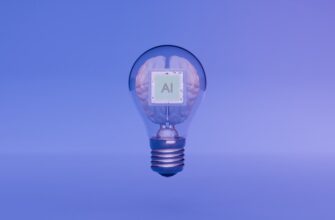## Cryptocurrency Ka Matlab Kya Hai?
“Cryptocurrency ka matlab kya hai?” is a common question among Hindi speakers exploring digital finance. Translated as “What is the meaning of cryptocurrency?”, it refers to a decentralized digital currency secured by cryptography. Unlike traditional money, cryptocurrencies operate without banks or governments, using blockchain technology to record transactions transparently.
## Cryptocurrency Kya Hai? Understanding the Basics
Cryptocurrency is a type of digital or virtual currency designed to work as a medium of exchange. Here’s what makes it unique:
– **Decentralized**: No central authority (like a bank) controls it.
– **Blockchain-Based**: Transactions are recorded on a public, tamper-proof ledger.
– **Secure**: Uses cryptographic techniques to prevent fraud.
– **Global**: Can be sent/received across borders instantly.
The first cryptocurrency, **Bitcoin**, was created in 2009 by an anonymous person (or group) named Satoshi Nakamoto. Today, over 10,000 cryptocurrencies exist, including Ethereum, Litecoin, and Dogecoin.
## How Does Cryptocurrency Work?
### Step 1: Blockchain Technology
Cryptocurrencies run on blockchain—a chain of blocks containing transaction data. Each block is verified by a network of computers (nodes) and linked to the previous one, creating an irreversible record.
### Step 2: Wallets and Keys
Users store crypto in digital wallets. Each wallet has:
– A **public key** (like a bank account number) for receiving funds.
– A **private key** (like a password) to access and send funds.
### Step 3: Mining
Miners use powerful computers to solve complex math problems, validate transactions, and earn crypto rewards. This process secures the network.
## Types of Cryptocurrencies
1. **Bitcoin (BTC)**: The original cryptocurrency, often called “digital gold.”
2. **Altcoins**: Alternatives to Bitcoin, like Ethereum (ETH) for smart contracts and Ripple (XRP) for bank transfers.
3. **Stablecoins**: Pegged to stable assets (e.g., Tether/USD) to reduce volatility.
4. **Meme Coins**: Created as jokes but gained value (e.g., Dogecoin).
## Pros and Cons of Cryptocurrency
**Advantages**:
– Fast, low-cost international transfers.
– 24/7 accessibility.
– Inflation-resistant supply limits (e.g., Bitcoin’s 21 million cap).
**Disadvantages**:
– High price volatility.
– Regulatory uncertainty in countries like India.
– Risk of hacking or lost private keys.
## How to Start Using Cryptocurrency
1. **Choose a Wallet**: Opt for hardware (offline) or software (mobile/app) wallets.
2. **Pick an Exchange**: Platforms like CoinSwitch or WazirX let you buy crypto with INR.
3. **Buy Crypto**: Start with small amounts of Bitcoin or Ethereum.
4. **Secure Your Assets**: Never share private keys and enable two-factor authentication.
## FAQs About Cryptocurrency
**Q: Is cryptocurrency legal in India?**
A: Yes, but profits are taxed at 30%. The RBI advises caution due to market risks.
**Q: Can I lose money in crypto?**
A: Yes. Prices can fluctuate wildly—only invest what you can afford to lose.
**Q: How do I buy cryptocurrency in India?**
A: Use SEBI-registered exchanges like CoinDCX or ZebPay, linking your bank account or UPI.
**Q: What’s the difference between crypto and regular money?**
A: Cryptocurrencies are digital, decentralized, and not backed by governments.
**Q: Is crypto safe for long-term investment?**
A: It’s high-risk. Diversify your portfolio and research projects thoroughly.
## Conclusion
Understanding “cryptocurrency ka matlab kya hai” is the first step into the world of digital finance. While crypto offers exciting opportunities, approach it with caution and education. Stay updated on regulations and market trends to make informed decisions.








